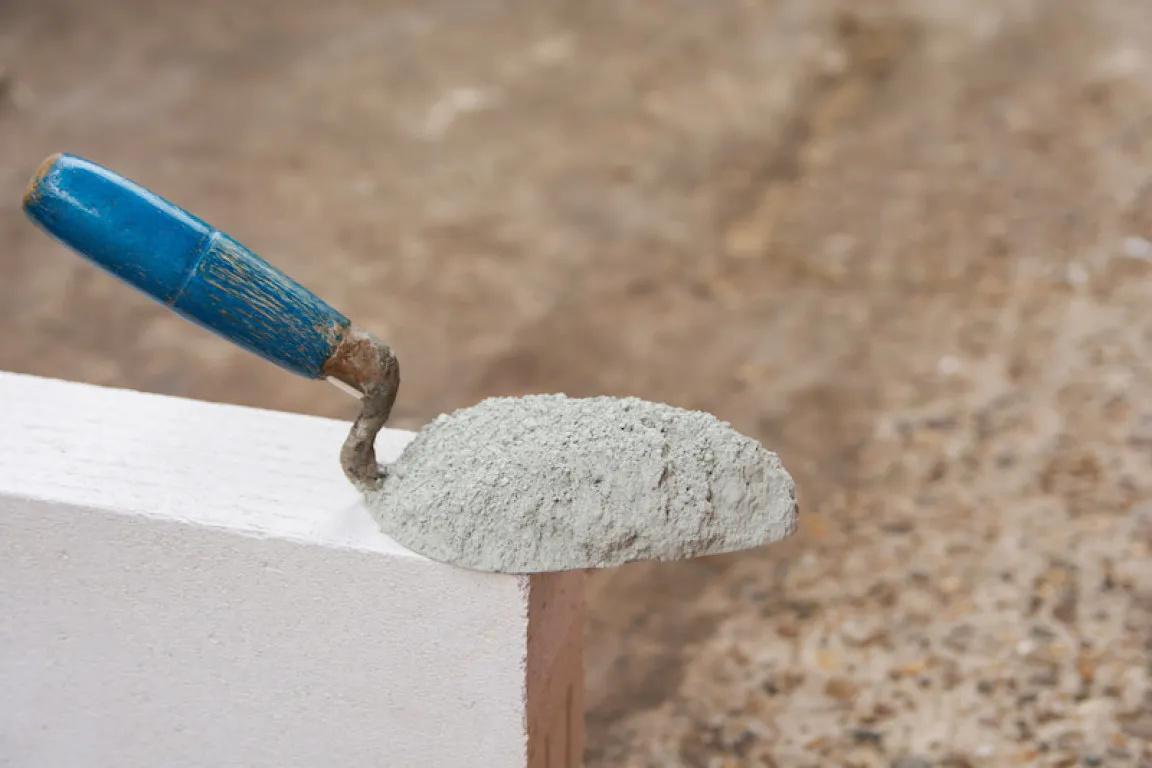Now that many people are more aware of climate change, the construction industry has become one of the sectors highlighted due to its contribution to the global carbon footprint. Among many popular and innovative solutions for this is green cement.
This type of cement is created to lower the environmental impact by optimizing the raw material and production process, making it a more eco-friendly alternative option.
This article will discuss green cement, its advantages, weaknesses, and types. Therefore, read the explanation below to get to know green cement’s potential in the recent construction industry!
What Is Green Cement?
Green cement is a created with low carbon footprint. The production is done with manufacturing technology supporting a low carbon footprint. This means that the production is more eco-friendly compared to conventional cement.
Green cement is one of the important innovations in the construction industry because it can decrease the bad impact on the environment. This innovation emerges from concerns over conventional cement production, which is a major contributor to air pollution due to the high carbon emissions produced.
Imagine, the production of a ton of conventional cement emits 0.6–1 ton of carbon dioxide, and most of the emission comes from clinker production. Clinker is the main material for cement production.
To overcome this, cement manufacturers innovate and create green cement prioritizing decreasing carbon emissions and the production process. As a result, the product is more eco-friendly and supports sustainable construction without sacrificing quality.
Read also: Learn About Cement Raw Materials, Types, & How to Make It
Advantages and Disadvantages of Green Cement
As a more environmentally friendly alternative, green cement offers a variety of advantages over conventional cement, from reduced carbon emissions to energy efficiency in its production process. Check out the other advantages below:
- Reduced Carbon Emissions: Green cement can reduce carbon dioxide emissions by up to 40%.
- Energy Efficiency: Some types of green cement is known to only require up to 60% less energy.
- Waste Utilization: Green cement can utilize industrial waste, reducing the need for raw materials.
- Durability: Most types of green cement have excellent durability and strength compared to conventional cement.
- Waste Materials: Green cement uses large amounts of waste materials to reduce raw material extraction, thereby helping to conserve natural resources.
Despite having many advantages to the environment and becoming the solution for sustainable construction, green cement still has some disadvantages you must take note of. Here are some disadvantages of green cement:
- Higher Cost: Green cement is more expensive than regular cement because it involves advanced technology in its manufacturing process.
- Limited Availability: Not all types of green cement are easily available in all regions.
- Longer Drying Time: Some types of green cement, such as geopolymer cement, require a longer drying time.
Types of Green Cement
There are many green cements created to support a more environmentally friendly construction. Below are some types of green cement with their characteristics:
1. Magnesium Oxychloride Cement
One of the more eco-friendly options is magnesium oxychloride cement or sorel cement. This cement does not use limestone, but magnesium oxychloride and magnesium chloride mix for production.
The production process also does not require high-temperature, automatically reducing energy consumption. With these characteristics, its carbon footprint becomes much lower. This type of cement is often used for floors, walls, and fire-resistant areas due to its strength and fire-resistant properties.
2. Geopolymer Cement
Geopolymer cement is formed through a chemical reaction between aluminosilicate materials and alkali solutions. This process does not require high temperatures so the CO2 emissions produced are much smaller.
Another advantage of geopolymer cement is its ability to use waste, such as fly ash as raw materials. In addition, this cement is very resistant to chemicals so it is suitable for projects that require more durability than conventional cement.
3. Ferrocrete
Ferrous concrete or ferrocrete is a green cement containing steel fiber or steel mesh. This steel product adds extra strength to the concrete. By reducing the use of natural resources in the mix, ferrocrete helps reduce the negative impact on the environment. This type is especially useful for projects that require strong materials, such as bridges or water tanks.
4. Calcium Sulfoaluminate Cement
Calcium sulfoaluminate cement or CSA is produced at a lower temperature compared to conventional cement, which is at 1,250°C. This temperature decrease significantly reduces energy use and carbon emissions. In other words, energy consumption is more efficient and CO2 emissions are much lower.
Not only that, CSA cement is fast drying and hardens with high strength and little shrinkage. This product is ideal for construction projects that require faster flow, such as highways and airports.
5. Sequestrated Carbon Cement
This concrete is designed to absorb carbon and has a special formula that allows CO2 to be taken in during the hardening process. Thus, instead of releasing CO2 into the atmosphere, this concrete absorbs it during the solidification stage, helping to significantly reduce the carbon footprint. This is a new technology that will help reduce the amount of CO2 in the Earth's atmosphere.
Those are the explanations of green cement, its advantages, disadvantages, and types. With all its advantages, green cement is the right choice to support more environmentally friendly and sustainable development.
Although challenges in its use still exist, technological developments and awareness of the importance of sustainability are increasingly encouraging the use of green cement in various construction sectors.
If you are interested in using eco-friendly cement with high quality, you can opt for Semen Merah Putih Flexiplus, Durapro, and Ecopro! Those three are environmentally friendly types of cement with low carbon emissions, suitable for projects prioritizing energy efficiency and sustainability.
Flexiplus has three types you can choose from: General Use, Moderate Sulfate, and High Early Strength. With proper setting time, using this cement allows for ease of workability and provides flexibility in various weather conditions and construction projects. Moreover, Flexiplus also has great compressive strength from day one to reach optimum strength within 28 days and low carbon emissions.
Are you interested in those cements? Contact us right now to get more information about Semen Merah Putih products. We are ready to help you find the best solution for your construction needs that is eco-friendly and sustainable!
Read also: The Right Ratio of Cement and Sand for a Sturdy Building



